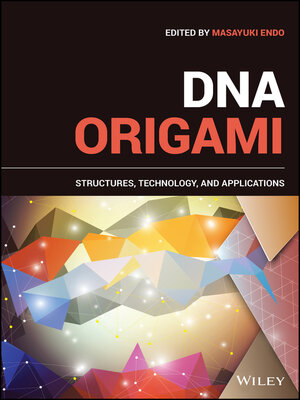
Sign up to save your library
With an OverDrive account, you can save your favorite libraries for at-a-glance information about availability. Find out more about OverDrive accounts.
Find this title in Libby, the library reading app by OverDrive.



Search for a digital library with this title
Title found at these libraries:
| Library Name | Distance |
|---|---|
| Loading... |
Discover the impact and multidisciplinary applications of this subfield of DNA nanotechnology
DNA origami refers to the technique of assembling single-stranded DNA template molecules into target two- and three-dimensional shapes at the nanoscale. This is accomplished by annealing templates with hundreds of DNA strands and then binding them through the specific base-pairing of complementary bases. The inherent properties of these DNA molecules—molecular recognition, self-assembly, programmability, and structural predictability—has given rise to intriguing applications from drug delivery systems to uses in circuitry in plasmonic devices.
The first book to examine this important subfield, DNA Origami brings together leading experts from all fields to explain the current state and future directions of this cutting-edge avenue of study. The book begins by providing a detailed examination of structural design and assembly systems and their applications. As DNA origami technology is growing in popularity in the disciplines of chemistry, materials science, physics, biophysics, biology, and medicine, interdisciplinary studies are classified and discussed in detail. In particular, the book focuses on DNA origami used for creating new functional materials (combining chemistry and materials science; DNA origami for single-molecule analysis and measurements (as applied in physics and biophysics); and DNA origami for biological detection, diagnosis and therapeutics (medical and biological applications).
DNA Origami readers will also find:
Given the wide scope found in this groundbreaking work, DNA Origami is a perfect resource for nanotechnologists, biologists, biophysicists, chemists, materials scientists, medical scientists, and pharmaceutical researchers.







